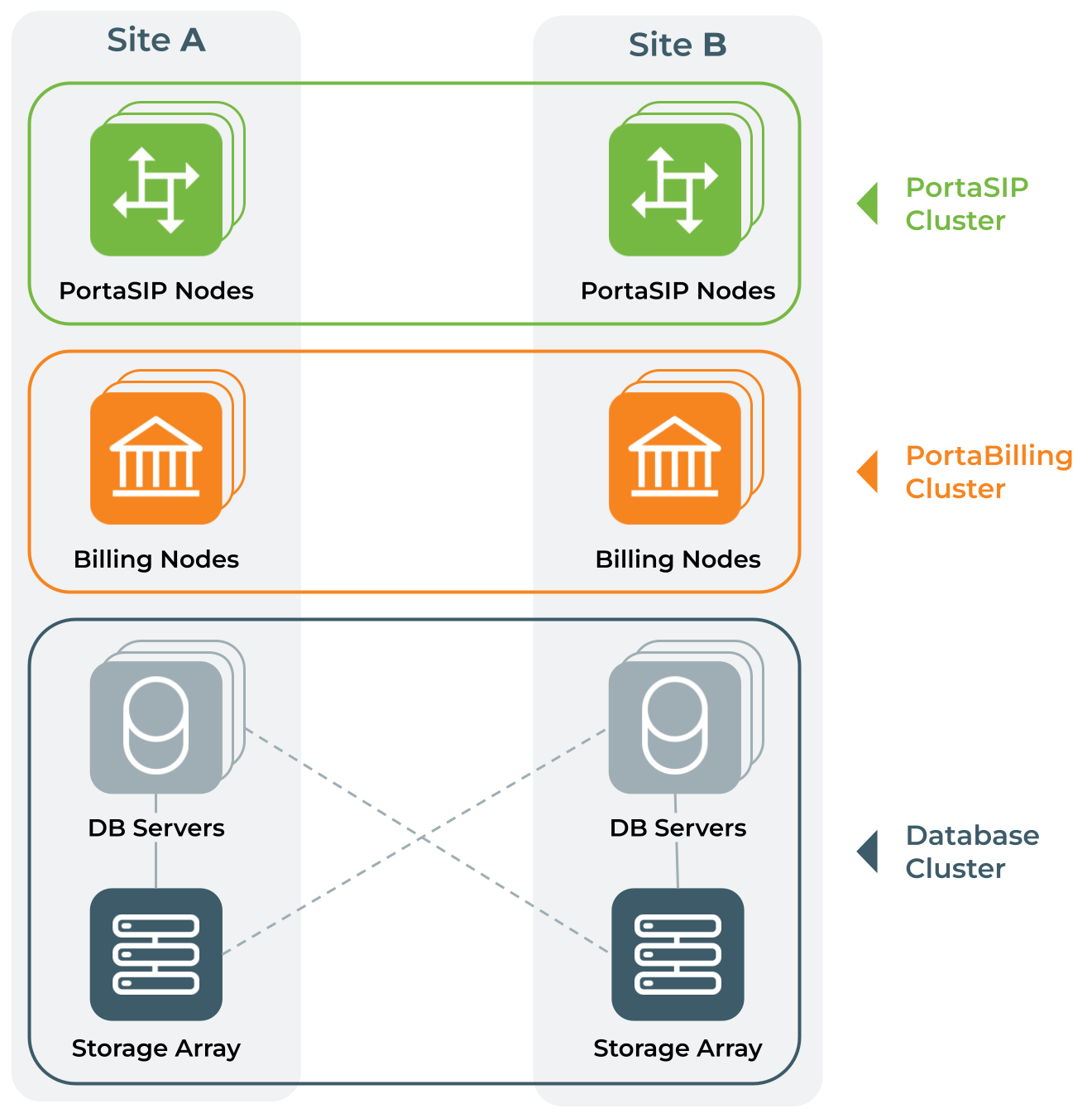To meet customers’ expectations regarding the quality of communication services, the service provider needs to introduce an extra degree of reliability within the network and its applications to ensure that the service is not interrupted – even if disasters like a local power outage, fire in the datacenter or server room flooding were to occur.
An excellent way to address this concern is to have another set of servers in a different location which can provide uninterrupted service in case of an outage at one of the sites.
The multiple site solution presumes that both sites are equipped with the same number of servers which are always active and running their sets of applications. The sites are located at a close distance from each other (usually within the limits of a city). Under normal circumstances, the load is equally shared among them. In the event of a disaster, each site can accommodate the entire load at once.
Distributed database cluster
Since classic Oracle RAC implementation is primarily designed for data centers that reside in a single location, another approach must be considered which allows the placement of individual RAC nodes in these separate buildings.
Oracle RAC on Extended Distance Clusters perfectly suits this purpose. It supports a deployment scenario in which database servers that process incoming requests reside in physically separated locations and are connected to the redundant storage arrays that keep all the data. So if the storage array in one location fails, the other will continue to function.
Components and design considerations
Oracle RAC on an Extended Distance Cluster is very similar to an Oracle RAC implementation at a single site.
To configure an Oracle RAC database on an Extended Distance Cluster environment you will need to:
- Place one set of nodes at site A.
- Place the other set of nodes at site B. Note that the distance between the sites must not exceed 50 km.
- Add a third voting disk away from the main sites. It will act as an arbitrator for deciding which site will keep running or become suspended in the case of a communication failure between the sites.
- Use host-based mirroring to host all the data on both sites and keep them simultaneously mirrored.
- Use fast and dedicated connectivity between the sites. Note that both sites must be deployed on the same local area network (either physical or logical).
Although this configuration provides a higher degree of protection from some disasters, bear in mind that it is expensive to set up and might be challenging to maintain. If you choose to deploy this configuration, first assess whether it is suitable for your business, especially with regard to the distance and the degree of protection it provides. The Extended Distance Cluster provides great protection for some disasters, but not for all. It will not protect you from cataclysms such as earthquakes, hurricanes, or regional floods.
Benefits of deploying PortaSwitch on an Extended Distance Oracle RAC
Deploying PortaSwitch on an Extended Distance Oracle RAC gives service providers the following advantages:
- The ability to provide uninterrupted service to their customers in case one site fails. Once an outage is detected at one of the sites, the full workload is routed to the other site with almost no interruption.
- The ability to fully use all available resources. Because both sites always run in active mode, the full workload is equally shared among them, allowing all the resources to be utilized at all times.



